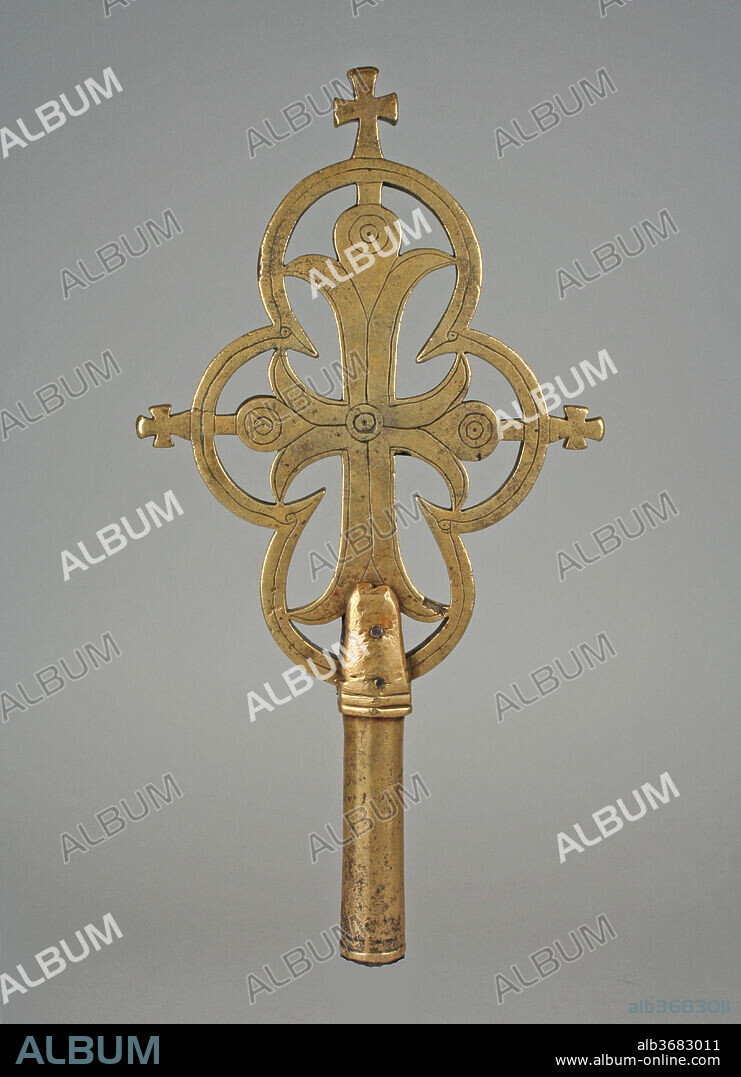alb3683011
PROCESSIONAL CROSS

|
Add to another lightbox |
|
Add to another lightbox |



Title:
PROCESSIONAL CROSS
Caption:
Processional Cross. Culture: Amhara or Tigrinya peoples. Dimensions: H. 12 13/16 x W. 6 11/16 in. (32.5 x 17 cm). Date: 13th-14th century.
Ethiopian Orthodox Churches retain a variety of crosses for use in liturgical ceremonies. Among the most common are crosses outfitted with sockets, such as this example, which could be mounted on a staff and carried during services or processions. The juxtaposition of positive and negative space employed in the cross would have created a dramatic silhouette against the sky during an outdoor procession, or cast an imposing shadow during a candlelit service.
Like all Ethiopian crosses, this cross was made by a monk at the request of an elite patron. Wealthy devotees commissioned gifts to bestow upon monasteries to receive prayers and increase their reputation, as well as to support the faith. The majority of Ethiopian crosses were cast in brass using the lost-wax casting technique. Because it allows for only one of each object to be created, the technique may have contributed to the innumerable diversity of Ethiopian metal crosses.
In this example, a trifoliate cross has been inscribed in a quatrefoil frame. Both the cross and its frame are further ornamented with incised lines and punctuated concentric circles at the middle and three terminals of the cross. Images of Christ are rare in Ethiopian crosses, reflecting Ethiopian Orthodoxy's dual belief in the cross as a sign of the Crucifixion and the Tree of Paradise. Thus, the small pattée crosses sprouting from the summit and sides of the frame may allude to budding leaves. Trifoliate crosses became common in northern Ethiopia beginning in the twelfth century, with comparable examples found in the celebrated churches of Yemrehenna Kristos and Lalibela.
Kristen Windmuller-Luna, 2014.
Technique/material:
BRONZE
Museum:
Metropolitan Museum of Art, New York, USA
Credit:
Album / Metropolitan Museum of Art, NY
Releases:
Model: No - Property: No
Rights questions?
Rights questions?
Image size:
2700 x 3730 px | 28.8 MB
Print size:
22.9 x 31.6 cm | 9.0 x 12.4 in (300 dpi)
Keywords:
 Pinterest
Pinterest Twitter
Twitter Facebook
Facebook Copy link
Copy link Email
Email

